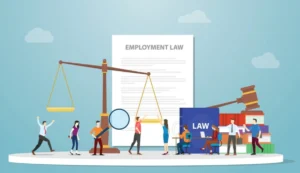The Constitution of India, adopted in 1950, is a dynamic document that has been amended multiple times to meet the needs of a changing society and governance.
Amendments are essential to incorporate new rights, address challenges, and strengthen democracy while keeping the core values intact.
The process of amendment is mentioned in Article 368 of the Constitution, which provides three methods – simple majority, special majority, and special majority with ratification by half of the states (for federal matters).
Key Constitutional Amendments
| Amendment No. | Year | Key Provisions |
|---|---|---|
| 1st Amendment | 1951 | Added 9th Schedule; restrictions on freedom of speech; land reform laws protected. |
| 7th Amendment | 1956 | Reorganization of states on a linguistic basis. |
| 24th Amendment | 1971 | Gave Parliament power to amend any part of the Constitution including Fundamental Rights. |
| 25th Amendment | 1971 | Restricted Right to Property; gave primacy to Directive Principles over Fundamental Rights in some cases. |
| 42nd Amendment | 1976 | Called the “Mini Constitution”; added words Socialist, Secular, Integrity to the Preamble; curtailed power of judiciary; strengthened Directive Principles. |
| 44th Amendment | 1978 | Restored judicial review; Right to Property made a legal right instead of a Fundamental Right. |
| 61st Amendment | 1989 | Reduced voting age from 21 years to 18 years. |
| 73rd Amendment | 1992 | Introduced Panchayati Raj institutions at the village level (Part IX). |
| 74th Amendment | 1992 | Introduced Urban Local Bodies/ Municipalities (Part IXA). |
| 86th Amendment | 2002 | Made education a Fundamental Right (Article 21A) for children 6–14 years. |
| 101st Amendment | 2016 | Introduced Goods and Services Tax (GST). |
| 103rd Amendment | 2019 | Provided 10% reservation for Economically Weaker Sections (EWS). |
Key Facts for Exams
- Total Amendments (as of 2025): 106
- Most important amendment: 42nd Amendment (1976) – “Mini Constitution”.
- Recent amendment: 106th Amendment (2023) – Provided reservation for women (1/3rd seats) in Lok Sabha & State Assemblies.
- Amendment procedure: Article 368 – Neither rigid like USA nor flexible like UK, but a mix of both.
- Types of amendments:
- Simple Majority (e.g., change in state boundaries)
- Special Majority (e.g., Fundamental Rights changes)
- Special Majority + State Ratification (e.g., Federal provisions like GST).
Important Constitutional Amendments in Detail
42nd Amendment Act, 1976 – “Mini Constitution”
- Added the words Socialist, Secular, and Integrity in the Preamble.
- Transferred subjects from State List to Concurrent List (like education, forests, wildlife).
- Increased tenure of Lok Sabha & State Assemblies from 5 years to 6 years (later restored to 5 years by 44th Amendment).
- Gave primacy to Directive Principles over Fundamental Rights in some cases.
- Curtailed the powers of judiciary (judicial review restricted).
- Made the President bound to act according to the advice of the Council of Ministers.
44th Amendment Act, 1978
- Restored many provisions curtailed by 42nd Amendment.
- Right to Property was removed from Fundamental Rights and made a legal right (Article 300A).
- Restored tenure of Lok Sabha & State Assemblies back to 5 years.
- Ensured Fundamental Rights cannot be suspended except under National Emergency (Article 352) and only for reasons of war/external aggression (not internal disturbance).
- Strengthened protection of liberty by requiring parliamentary approval for preventive detention beyond 2 months.
73rd Amendment Act, 1992 – Panchayati Raj
- Gave constitutional status to Panchayati Raj Institutions (PRIs).
- Added Part IX (Articles 243–243O) and 11th Schedule (29 subjects).
- Made 3-tier Panchayati Raj system (Gram Panchayat, Panchayat Samiti, Zila Parishad).
- Provided direct elections to all seats in Panchayats.
- Reservation for SCs, STs, and women (1/3rd seats).
- Introduced the post of State Finance Commission and State Election Commission for Panchayat elections.
74th Amendment Act, 1992 – Urban Local Bodies (Municipalities)
- Gave constitutional status to Municipalities.
- Added Part IXA (Articles 243P–243ZG) and 12th Schedule (18 subjects like urban planning, slum improvement, public health, etc.).
- Created 3 types of Municipal bodies:
- Nagar Panchayat (for transition areas rural → urban)
- Municipal Council (for smaller urban areas)
- Municipal Corporation (for larger urban areas)
- Reservation for SCs, STs, and women (1/3rd seats) in Municipalities.
- Provided for Finance Commission & State Election Commission for Urban Local Bodies.
These four amendments are frequently asked in UPSC/State PSC exams because they deal with Preamble, Rights, Local Governance, and Emergency provisions.

Leave a Comment Cancel reply